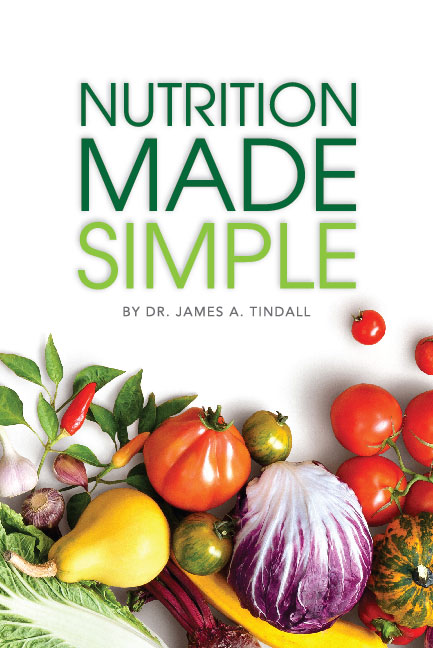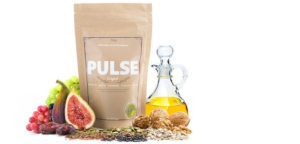Do you ever get tired of turning on the television and seeing the next fad of fitness or nutrition, blasting into your living room? While there is some good information out there, you have to wade through a lot of that information to find things that work. We always focus on scientifically-based results and research thus, what you read herein will work. And, there are no shortcuts. As has been repeated, there is no substitute for good nutrition and exercise, after all, it’s a lifelong process – a lifestyle. In fact, living a nutritious lifestyle can be both easy and fun.
Nutrition is not just about vitamins and supplements—it also includes fiber and healthy fats. Thus, now is a perfect time to learn simple ways to help your whole family eat healthier. First, let’s talk about fats. Dr. Tindall in his Nutrition Made Simple book has a list of good and bad fats. Let’s talk about some foods that contain good fats.
Advertisement: Amazon (click on photo for more info)

Not all fats are bad, despite fat sometimes being a dirty word. What you want to focus on is foods that contain either monounsaturated or polyunsaturated fats, which are important for your brain and heart functions. The key is to limit foods with trans fats, which increase your risk for heart disease. Thus, some good sources of healthy fats include olive oil, nuts, seeds, certain types of fish, and avocados.
Avocados are not only full of healthy fats, but there are so many recipes you can use them in. As an example, they are commonly added to the tops of salads, put in dips, or even added to a smoothie.
Examples of eating healthy with good fats:
• Add fish with healthy fats to your nutritional menu such as tuna or salmon about twice per week;
• Use nuts or seeds as a topping (almonds, walnuts, or pumpkin seeds) on soups, salads, or meat;
• Swap processed oils (like soybean oil) for oils that are cold-pressed, like extra-virgin olive oil or sesame oil; you can also get cold processed canola oil – stay away from processed oils; and
• As above, top your salads or lean meats with sliced avocado, or add some to your smoothie.
Moderation in eating, as well as exercise is the key. Balance is what you seek and good nutrition is all about balance. This means that you need to balance nutritional ingredients as well. One of the most important to balance and limit is salt, i.e., sodium. Sodium can increase blood pressure, which raises the risk for heart disease and stroke. The recommended amount is about 2,300 mg or, about one teaspoon of salt.
Limit sodium by:
• While dining out, ask for dressings and sauces on the side;
• Look for products at the grocery store that say ‘low sodium’ on the label;
• Try to prepare you food fresh when you can. Avoid processed and prepackaged food, which can be full of hidden sodium. This list is endless – pizza, deli meats, bread and many more; and
• Try using spices, lemon juice, or herbs to your meals in lieu of salt
Another healthy eating tip for April is to increase your fiber consumption. This will help you stay more regular, as well as feeling fuller longer. Additionally, fiber helps control blood sugar, as well as lower cholesterol levels. There are many sources and you should be able to find a couple that you enjoy such as vegetables, fresh fruits, whole, grains, beans and peas (legumes). and others.
Advertisement: Don Tolman International (click on photo for more info)

How to increase your fiber:
• Add beans or peas to your salad to add fiber, texture, and flavor – about ½ cup.
• Keep some raw veggies sliced and in containers for quick snacks – celery, cabbage, …;
• Begin the day right with breakfast – high fiber, whole grain – sprinkle on some nuts; and
• Do not overcook your vegetables – steaming is better than boiling or use ‘flash frozen’ from the store.
Add color to your foods with Veggies
Veggies, like red or green bell pepper are higher in vitamin C content than an orange on a volume basis. Add some to spruce up the color of your dish. Also, add oranges, leafy-green veggies, herbs, and tomatoes to add even more color. But, they don’t just add color, they add vitamins, minerals, and fiber.
Examples of veggie additions to food:
• Add diced vegetables such as broccoli, green pepper, herbs, or onions to stews and omelets to boost color and nutrients;
• Use tomatoes to make a red sauce and spice it up with fresh spices and herbs to add to your food; or
• Sprinkle fresh herbs over your pasta (preferably whole wheat) or salad.
For the chip-a-holics among you, replace your salty, fried chips with dried fruit, nuts, cherries, berries, or another healthier snack.
With a little planning, it’s not difficult to change to a more healthy nutritional menu.
Advertisement: Louis Vuitton (click on photo for more info)








